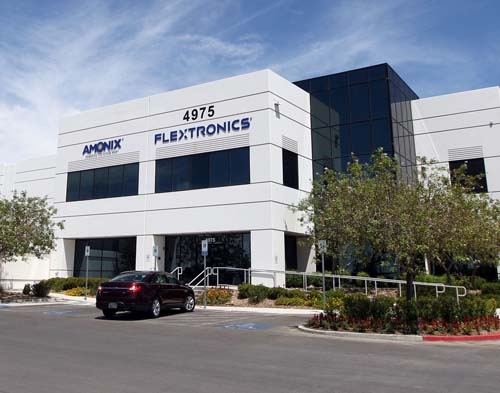Solar panel company Amonix says competition, high costs forced closure

Solar panel manufacturer Amonix might have been in financial trouble before the company’s chief executive officer was killed in a December plane crash and 70 percent of the work force at its North Las Vegas plant was laid off a month later.
The 214,000-square-foot plant, subsidized by more than $20 million in federal tax credits and grants, ceased operations in May, shipping most of the equipment back to its California headquarters and leaving about 300 people without a job.
An April balance sheet for the Seal Beach, Calif.-based manufacturer of concentrated photovoltaic solar panels, obtained this week by the Review-Journal from one of the company’s unsecured creditors, shows liabilities of $93.5 million and assets of $72.2 million.
Liabilities include $50.2 million in accounts payable, $17.9 million in accrued expenses and a $10.2 million deferred commitment fee. The company also has a noncurrent loan of $15 million.
In its first public statement on the closure, the company said it had no choice but to close the plant after less than a year in operation.
"Based on intense competition, the challenging solar energy equipment pricing environment and lower-than-anticipated demand for CPV solar energy in Nevada and other states in the Southwest, Amonix has made the difficult decision to restructure the company and shut down its manufacturing center in North Las Vegas," spokeswoman Kelly Rice said Thursday in a statement.
The company did not use $5.9 million in federal tax credits arranged by the Obama administration because it didn’t realize any taxable income, Rice said. It received a $15.6 million grant from the U.S. Department of Energy, approved in 2007 under the Bush administration.
Rice said the company will vacate the facility at 4975 N. Pecos Road, in the Golden Triangle Industrial Park, by early August.
The Amonix plant shutdown is an "unfortunate reminder" that not all companies succeed in any industry, said Rhone Resch, president and chief executive officer of Solar Energy Industries Association in Washington, D.C.
Amonix was supported by private investors as well as Republican and Democratic policymakers who all understood the need to invest in a growing industry, Resch said. The solar industry employs 100,000 people in the United States at 5,600 companies, and last year the industry more than doubled.
"Most of those companies are small, the true engines of economic growth and innovation," Resch said Thursday. "Not all of those companies will succeed. That’s the nature of capitalism. We should be focusing on helping entrepreneurs develop the best technologies and bring the best products to the market and then letting the market decide which ones succeed and which ones fail."
After the Review-Journal reported the permanent closure of the plant on Wednesday, prominent Nevada politicians weighed in, blaming one another for supporting or failing to support investment in energy research and manufacturing.
But Resch said Amonix should not be a political story. Rather, it is a story of an evolving and competitive industry that benefits everyone, he said.
"America can’t afford to cede yet another high-tech industry and its jobs to China, Europe or elsewhere while we waste time on political arm-wrestling," the industry expert said. "Today, solar powers our critical infrastructure – military bases, hospitals and schools – as well as homes and companies in every state. Solar is one of our nation’s many great energy resources, working for Republicans and Democrats alike."
Joseph McCabe, manager of the renewable energy team at SRA International in Golden, Colo., said concentrated solar power has been difficult to commercialize.
CPV technology uses optics to focus large amounts of sunlight onto small photovoltaic surfaces to generate electricity more efficiently than other solar technologies. The Amonix system consists of seven proprietary modules and uses dual-axis tracking, generating more than 40 percent more energy than conventional fixed-tilt solar panels.
"It has to be on a two-axis tracker and be precise," McCabe said. "You lose 20 percent of the sunlight, called diffused light, which cannot be concentrated. Nevada has also been a very difficult place to do renewables. Many parties, not much installation."
It didn’t help that Amonix lost CEO Brian Robertson, he added. After Robertson was killed in a plane crash in Pennsylvania, Jan van Dokkum, a partner with Kleiner Perkins Caufield and Byers, lead investor in Amonix, was named interim chief executive officer.
The company continues to operate a manufacturing facility in Torrance, Calif.
"We appreciate the efforts that the city of North Las Vegas and the state of Nevada made in working with us to make the facility successful," said Rice, the Amonix spokeswoman. "We looked at several options and were really hoping that we could keep the North Las Vegas manufacturing facility, but it is not economically possible for Amonix at this time. As we work toward a successful long-term future, we are adjusting our business and operations plans to parallel changing market conditions."
Contact reporter Hubble Smith at hsmith@reviewjournal.com or 702-383-0491.